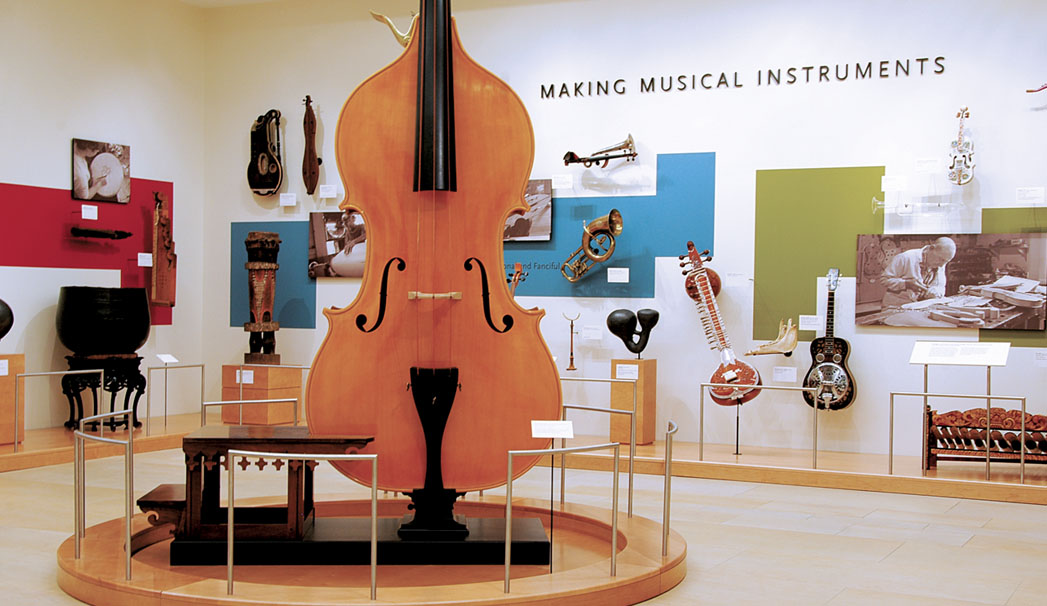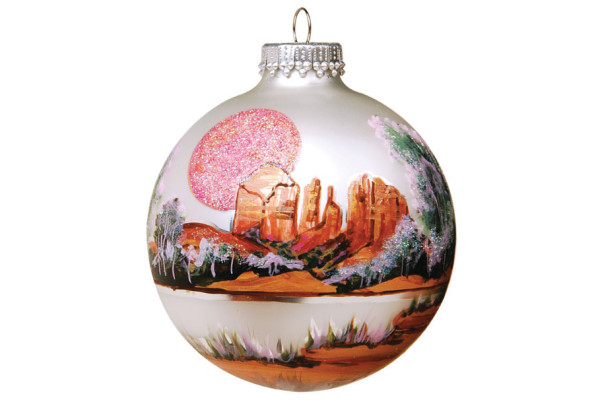Despite the public flogging Arizona has received over the past few months, we still think this is an incredible state. We have Grand Canyon and Saguaro national parks and the red rocks of Sedona in our backyard; spas and golf courses that attract visitors from around the world; a blossoming wine industry and cutting-edge cuisine; and a wealth of Native American culture. Here’s another one to add to the list: the Musical Instrument Museum.
Only 90 minutes from Sedona, the two-story, $250 million MIM sits on 20 acres of desert land within shouting distance of the 101 freeway at the Tatum exit. Richard Varda and RSP Architects designed the 190,000-square-foot building, and its Indian sandstone exterior blends perfectly with the landscape. We passed by MIM on several occasions without even realizing the riches inside. To enter, you pass through a courtyard designed to evoke thoughts of Arizona’s canyons – tall walls envelop you on either side, and water trickles through the cactus landscape. When you walk through the glass doors, you’re struck by the fact that this modern, airy museum could easily fit in with New York and Chicago’s landmarks. Staffs of music inspired the flowing entryway, and the curves of the staircase resemble those of a grand piano. How lucky are we that this gem is located in northern Phoenix?
Background
The birth of MIM began on a terrace in Brussels over cigars and beer about five years ago. Bob Ulrich, former CEO and chairman of Target Brands (yes, that’s Target of the red bulls-eye), was visiting his friend and fellow art collector, Marc Felix. Bob was discussing the idea of purchasing an Impressionist painting (the Impressionist gallery at the Minneapolis Institute of Arts is named after him) when Marc told his friend he could start his own museum for the cost of one painting. Bob, a collector of African art, began musing about what type of museum he would open, and he immediately remembered his love of the Musée des Instruments de Musique in Brussels. He thought of the two little girls he had seen at the museum, swaying to the music that was playing on their headphones as they stared in awe at an exhibit. A seed that had been planted over cigars slowly began to grow.
“Up until now, instruments in museums have been objects on a wall,” says Bill DeWalt, president and director of MIM. “Bob wanted to make sure the instruments would come alive. He sees instruments as amplifiers of human emotion – they need to be played to convey what they are all about.”
But Bob took the idea of hearing the instruments one step further: He envisioned MIM with television screens broadcasting footage of the instruments being played in their country of origin in order to give each one a cultural context. Technology, says Bill, made MIM possible. The museum is divided into five Geo-Galleries: Africa and the Middle East, Asia and Oceania, Europe, Latin America and the Caribbean, and the United States and Canada. Each Geo-Gallery is subdivided by country or region. When you approach an exhibit, your headset automatically syncs to the video being played on the flat-screen TV in front of you. The audio-visual clips last roughly 30 seconds. (FYI: If you were to watch all the clips, you’d be spending 12 hours on-site.)
Bob’s goal was to make MIM the world’s first global instrument museum by collecting ensembles from every country in the world, and he’s nearly succeeded. Just months after the museum’s grand opening on Apr. 24, 2010 (the site ground breaking was in February 2008), it boasts instruments from all but about 10 countries. Instruments are still missing from “complicated” locations such as North Korea and Yemen, says Bill, but curators continue to work on obtaining instruments from the few remaining countries. So where did all the instruments come from? Private collections? Hardly, says Bill.




